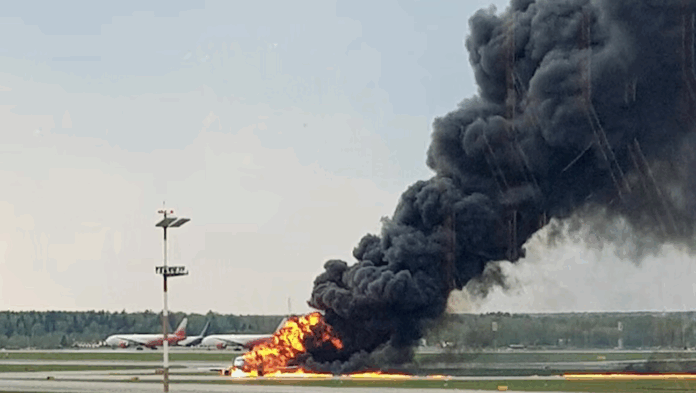A Soviet-era Antonov-24 vanishes from radar over Russia’s Far East. Found in flames near the Chinese border, with all 49 aboard presumed dead. A tragedy shrouded in ambiguity, and geopolitical implications.
A Soviet aircraft goes down in Russia’s strategic Far East
When a Russian plane crashes in the wilderness, the first thing that disappears isn’t just the signal, it’s the information. This time, it’s an Antonov-24 plane crash, reported missing during a domestic flight from Blagoveshchensk to Tynda, both outposts in the far eastern Amur region, a corridor of strategic interest brushing up against China.
The remains of the aircraft, operated by the Angara airline, were discovered engulfed in flames deep within a forest, just 16 kilometers from Tynda, the destination airport. All 49 people onboard, including 5 children and a 6-person crew, are believed to have perished. The region’s governor, Vasily Orlov, confirmed the plane had disappeared from radar; the rest came through a trickle of terse dispatches from state agencies.
Official silence is louder than the crash itself
The Russian Emergency Ministry issued a short statement: aerial reconnaissance had located the wreck, with “no signs of survivors.” No detailed account of flight conditions, no black box update, no transcript. Only a single image: twisted metal, scorched terrain, smoke still rising. And yet, nothing more.
What should have triggered a flurry of questions has instead been met with studied calm. Media outlets dutifully echoed the statement without further scrutiny, while federal TV barely mentioned the crash at all. One can’t help but ask: what is not being said?
The Antonov-24: flying relic of an overstretched system
The Antonov-24, a twin turboprop designed in the Soviet 1960s, remains in limited service on Russia’s most remote regional routes. In a country where vast distances outpace infrastructure, these aircraft are often the only lifeline for sparsely populated towns. Yet, these same aircraft operate in a twilight of aging hardware, Western sanctions, and constrained technical replacements.
Despite its age, the Antonov-24 is not inherently unreliable. Russian aviation technicians are famously rigorous. But maintenance alone does not negate risk. And the broader system, regional carriers underfunded, overworked, and navigating harsh terrain, is far more fragile than Moscow admits.
A politically sensitive zone, an unexplained disaster
No immediate cause has been declared: no mention of mechanical failure, no weather alerts, no signs of distress before the Antonov-24 plane crash. The lack of a distress call is particularly notable. It is this vacuum of information, in a region so close to the Chinese border, peppered with critical infrastructure, that raises flags.
Tynda is not just a town. It sits on the Baikal-Amur Mainline (BAM), a railway of military and strategic importance that runs parallel to the Trans-Siberian route. The region hosts dual-use facilities, both civilian and military. Every movement here matters. And when a crash occurs just outside that perimeter, the silence becomes deafening.
Russia’s logistical vulnerabilities on full display
This tragedy, while personal for the victims’ families, is also a national exposure. Russia, already burdened by the costs of long-term conflict, international isolation, and economic sanctions, shows cracks in its infrastructure, particularly in the eastern provinces.
And while officials are unlikely to admit it, every crash involving outdated Soviet-era aircraft is a reminder: Russia’s vertical power structure does not extend evenly across its own map. Not when a plane can fall from the sky with no explanation, and no urgency to offer one.
In Russia’s Far East, even disasters vanish into silence
The Antonov-24 plane crash will likely be chalked up to “technical failure” in an eventual report, buried among other “unfortunate accidents.” But those paying attention will have noticed the delay in communications, the minimal media coverage, the lack of immediate rescue coordination. In other words, the signs of a system trying to contain a narrative, rather than clarify it.
In geopolitics, remote disasters are never just remote. Especially when they happen this close to the map’s edge.



